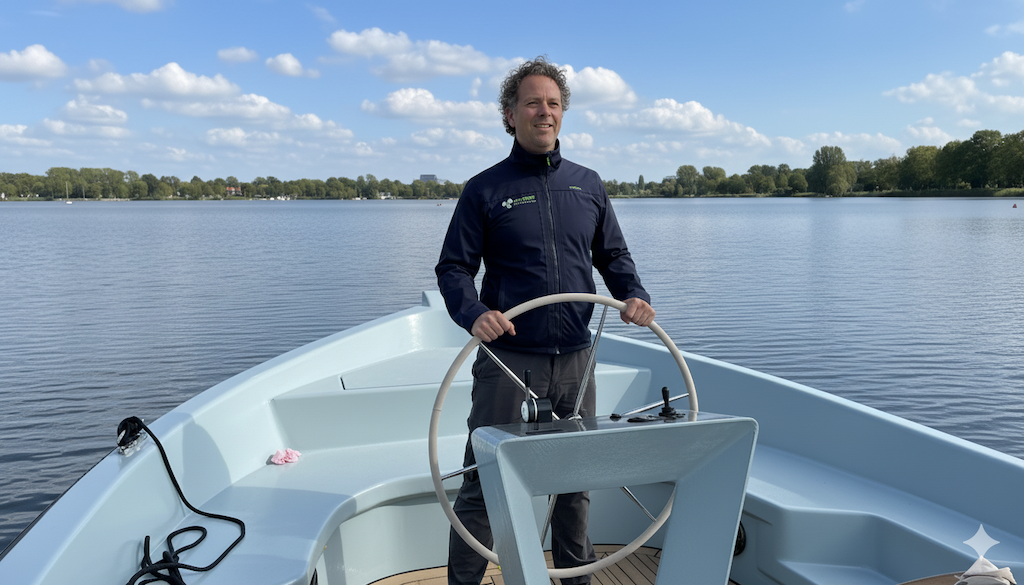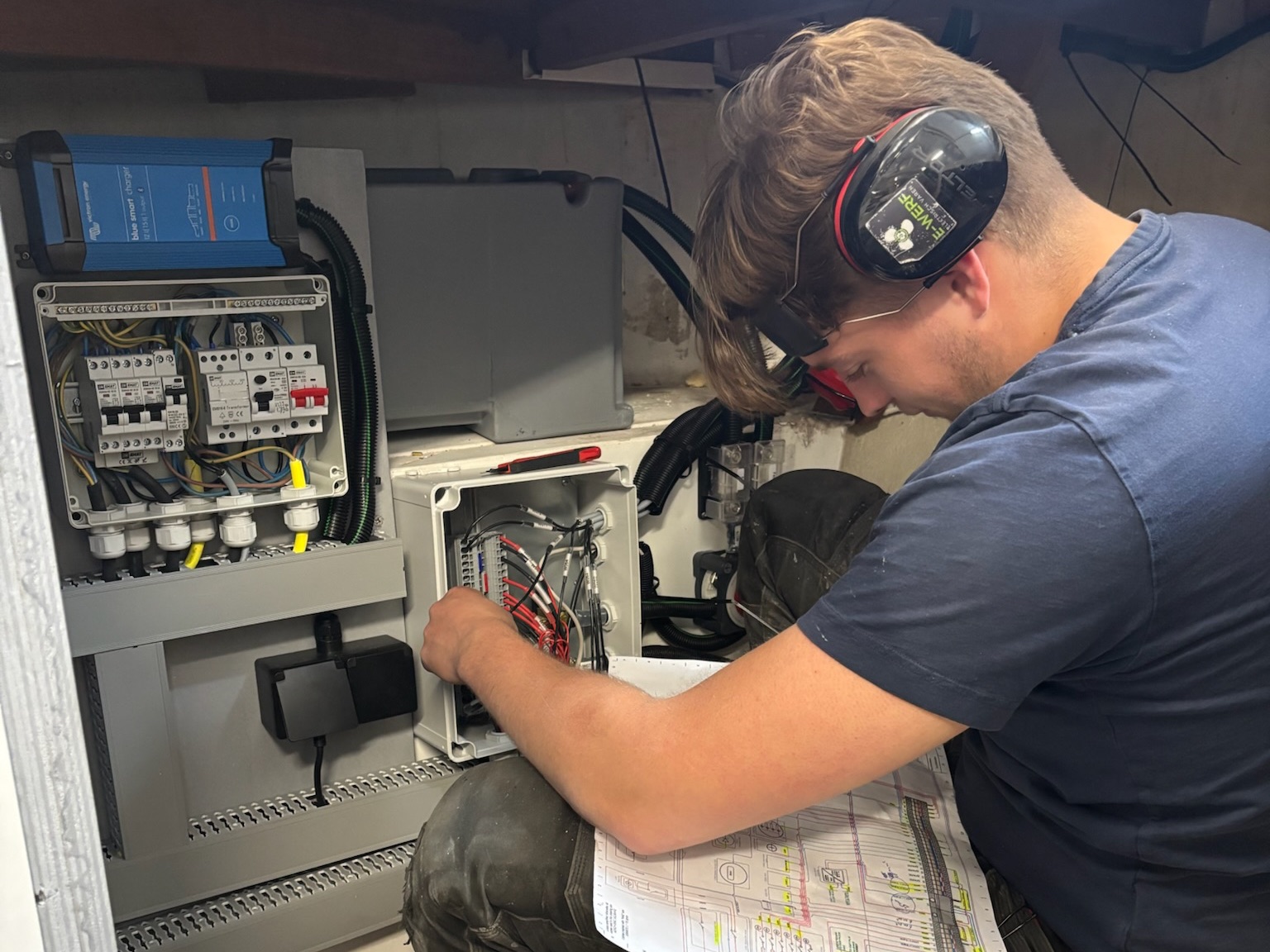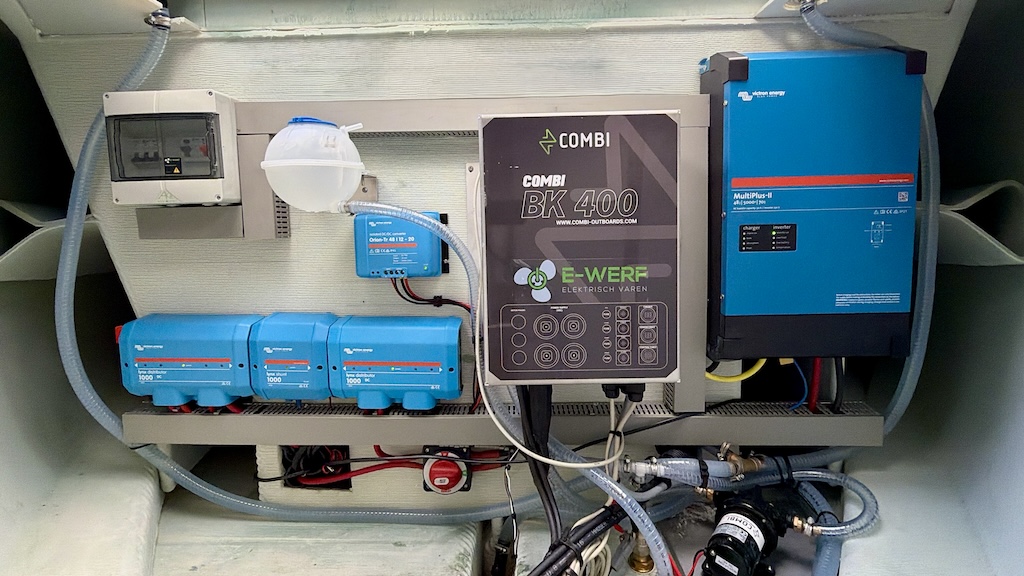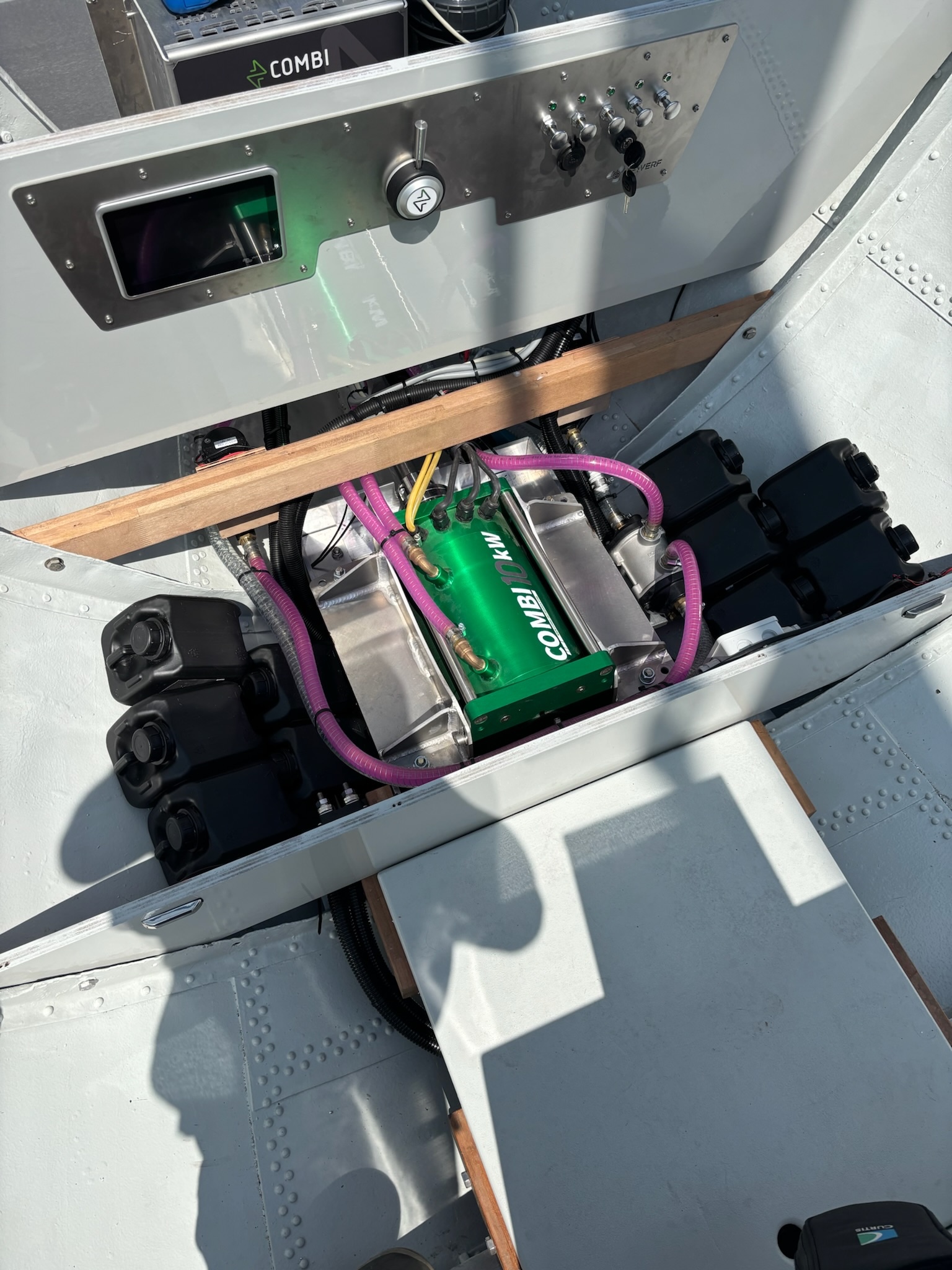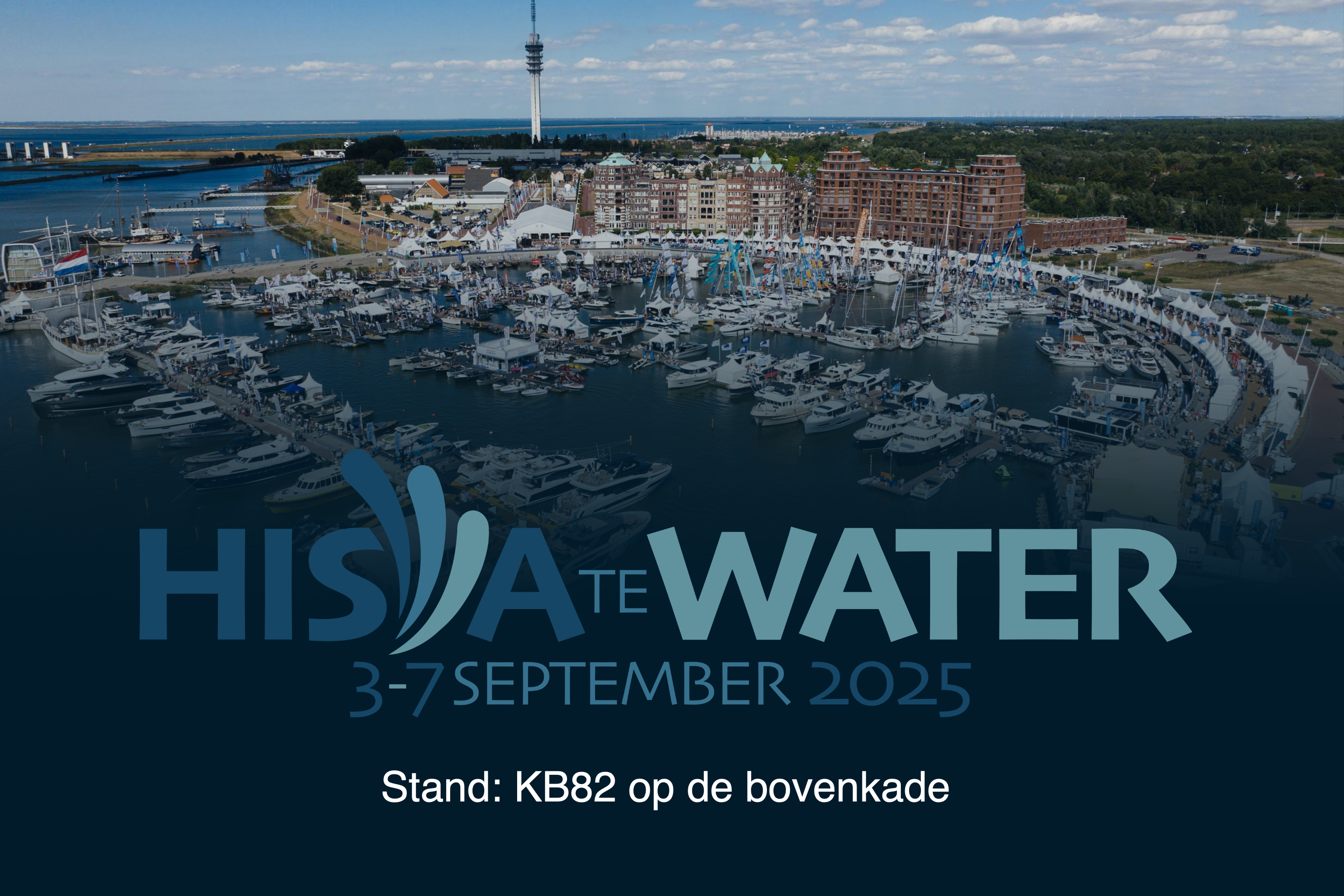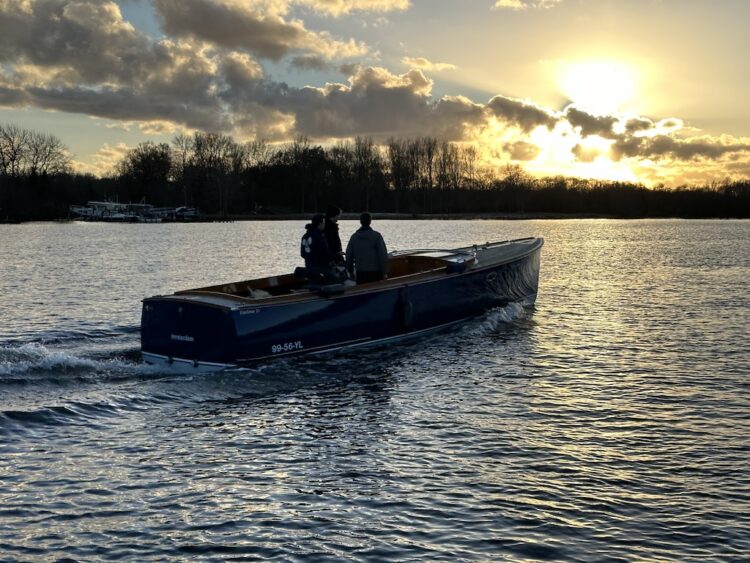
When we were designing the Boat Page on our GX touch screen displays we received generous help from Olivier Venema, founder of E-WERF - the Dutch specialist in water craft electric propulsion systems. The GX Boat Page is a dedicated display designed for electric or hybrid boats showing battery, engine RPM, and electric drive information all in one place.
We got to know Olivier well, and to admire the work he does, so this week we'd like to share with you some of the expertise he has acquired during more than 350 boat conversions from Diesel to Electric propulsion.
Over to Olivier...!
Electric propulsion systems for private craft
"...Our interest in electric boating began in 2014 when we restored our very first lifeboat. We rebuilt her from the hull up and didn't want to put a diesel engine back in.
Around that time the first consumer-grade electric motors were becoming available. Before then only industrial motors for working craft were manufactured - but demand from private boat owners saw the development of compact, reliable and affordable electric propulsion drives.
On her maiden voyage it immediately became clear that electric propulsion would one day become the new standard for sloops. It felt like an evolution. From that conviction E-WERF was born to help boat owners convert their vessel from diesel to electric power.
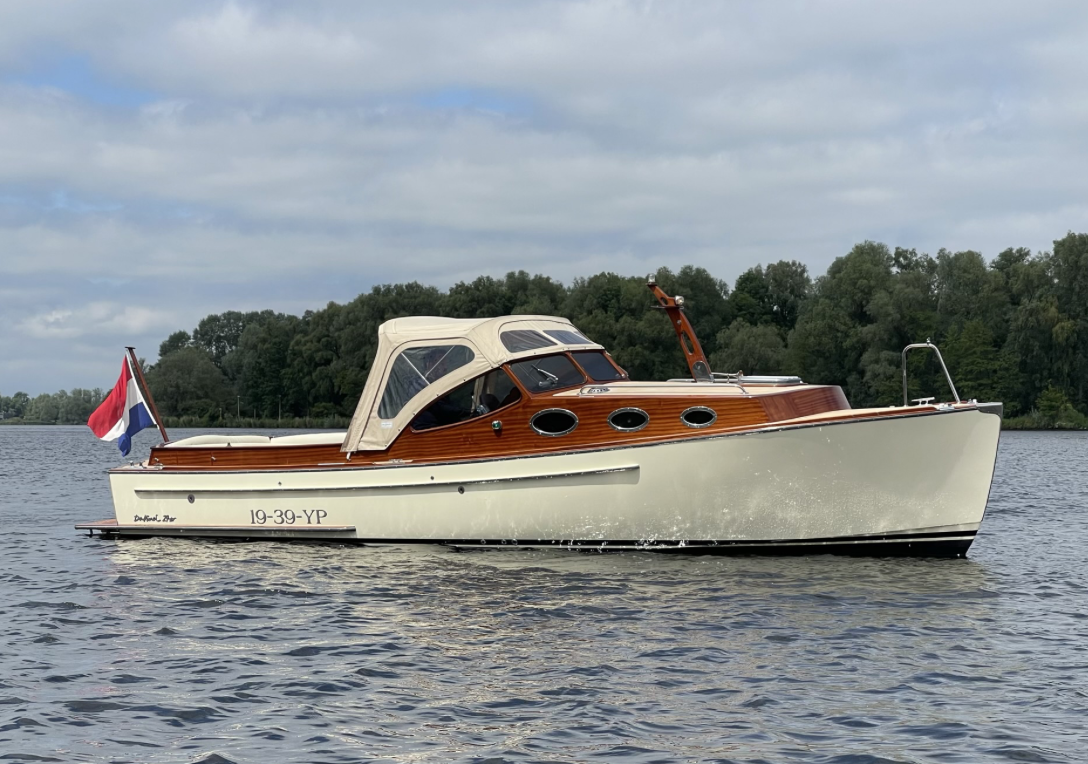
What happens during conversion?
Here's a simple outline of the process: The boat is lifted from the water and the entire diesel system, including engine, fuel tanks, starter batteries, exhaust and associated piping, is removed. We then install a purpose-built electric propulsion system: a light, powerful electric motor; an energy-dense lithium battery bank; and a tailored charging and inverter setup. All 12 V and 24 V onboard circuits - and 230 V circuits where required - are integrated so that lighting, pumps and appliances continue to work exactly as before. Cooling is handled with a heat-exchanger system, often making use of the boat's existing seawater intake or repurposing the former exhaust outlet. Depending on the project, we also use direct raw-water cooling or throat cooling, and for relatively small motors air cooling is sometimes the preferred method. After careful testing and calibration, the boat is relaunched as a quiet, clean, and highly responsive electric craft.
E-WERF
Since those beginnings we have converted or re-equipped almost four hundred boats with new electrical systems, ranging from small sloops of around 7 metres (23 feet) and modest displacement to large sailing yachts up to around 18 metres (60 feet). We provide everything: shore power connections, electric propulsion and battery banks, right through to complete integrations with onboard electrical and control systems. During each project we aim for bespoke solutions and top quality, so that after delivery the vessel not only runs perfectly on electric power, but all other onboard systems continue to work exactly as the owner expects.
A good example is Donna, an aluminium lifeboat built in 1961 and fully restored in 2025. She once served as a robust postal boat along the Scandinavian coast, but when we found her she was weathered and bare. From the hull up we restored Donna with great care and attention to detail. Old through-hull apertures were permanently welded shut, the hull was coated with epoxy inside and out - to ensure decades of protection - and then she was professionally painted to provide an elegant finish.
The interior was designed to be both practical and beautiful, with mahogany-varnished benches aligned fore-and-aft and made removable so that everything can be taken out within two hours for cleaning, varnishing, or maintenance.
Under the deck sits a 10 kW liquid-cooled electric motor from Combi EPS with a heat exchanger. Everything is networked via NMEA2000. We installed an Ekrano GX communication device which has a touch-screen display so that all motor data can be viewed live. The 400 Ah net battery bank provides around ten to twelve hours of trouble-free cruising. The charging and inverter system is a Quattro 48/5000, adjustable via the Ekrano display. Whether the boat is docked at a harbour offering 16A shore power, or plugged into a small household outlet, charging is always possible. This integration of Victron components ensures seamless operation and full on board monitoring - and even remote monitoring using the Victron Remote Management platform -. VRM.
Donna is privately owned and used for family cruising and day trips where her silent running and long range of about ten to twelve hours at typical speeds make her ideal for relaxed outings.
Commercial Tour Boat
A completely different project involved a large tour boat operating in Amsterdam. Originally powered by a heavy six-cylinder diesel engine, we removed the diesel and installed a 1500 Ah battery bank together with a 20 kW liquid-cooled electric motor. Charging is provided by three parallel-connected MultiPlus II 5000 units, allowing fast three-phase charging from shore power. It's also possible to charge from a single MultiPlus II unit using a standard household outlet if a three-phase power supply is not available. An Ekrano GX device manages system communication and a 4G/LTE provides engineering access to the set up from anywhere - using VRM.
This solution makes powerful, silent, and flexible operation possible even on routes where three-phase shore power cannot be found.
How much does it cost to upgrade to electric propulsion?
From a financial point of view, a smaller electric conversion typically starts around €13,500 (US$16,000) while larger or more complex installations are quoted individually depending on battery size, motor power and onboard integrations. Although an electric installation can be a higher initial investment than a simple diesel swap, the long-term advantages-minimal maintenance, lower running costs, and the ability to enter emission- or noise-restricted waters-make electric propulsion the smart choice for many owners. And above all else, it's so much more relaxing!
Feedback
We are proud to receive customer reviews - such as: "Here they really know what they're doing. The boat and motor are in top condition and the team is always reachable and calls back promptly;" and: "The best products and services come from passionate people. E-WERF is client-focused, hands-on, practical and sticks to budget. Now we cruise the Frisian lakes in complete silence."
Our customers value the comfort of silent, vibration-free cruising and the absence of diesel fumes. Many also enjoy freedoms which diesel simply can't offer - from whisper-quiet evening trips through Amsterdam's canals to unrestricted access to protected natural waters and marinas that ban internal-combustion engines.
E-WERF has also played an active role in the development of Victron Energy's Boat Pageavailable on GX communication user-interface displays. We collected and shared market feedback about what boat owners need to see, built test setups, and worked with a range of motor manufacturers to ensure the system displays all the relevant data. In every installation where the motor supplier is Victron-compatible, we make sure the integration is complete and fully functional.
A word from Victron Energy
It's a great gift for Victron to have found a partner in E-WERF who has supported our R&D work with dedication and enthusiasm throughout the entire development cycle of this new feature. From the initial concept to gathering requirements and validating the design drafts, E-WERF have supported us with their expertise in electric propulsion. We were also able to benefit from their trade network, which put us in touch with numerous propulsion manufacturers and enabled us to conduct integration tests on real vessels. Their years of experience in the electric boating market and the hands-on mentality of Olivier and his team contributed significantly to the success of the new Boat page and and we look forward to continuing to staying in close contact and learning from their experiences in the field.
